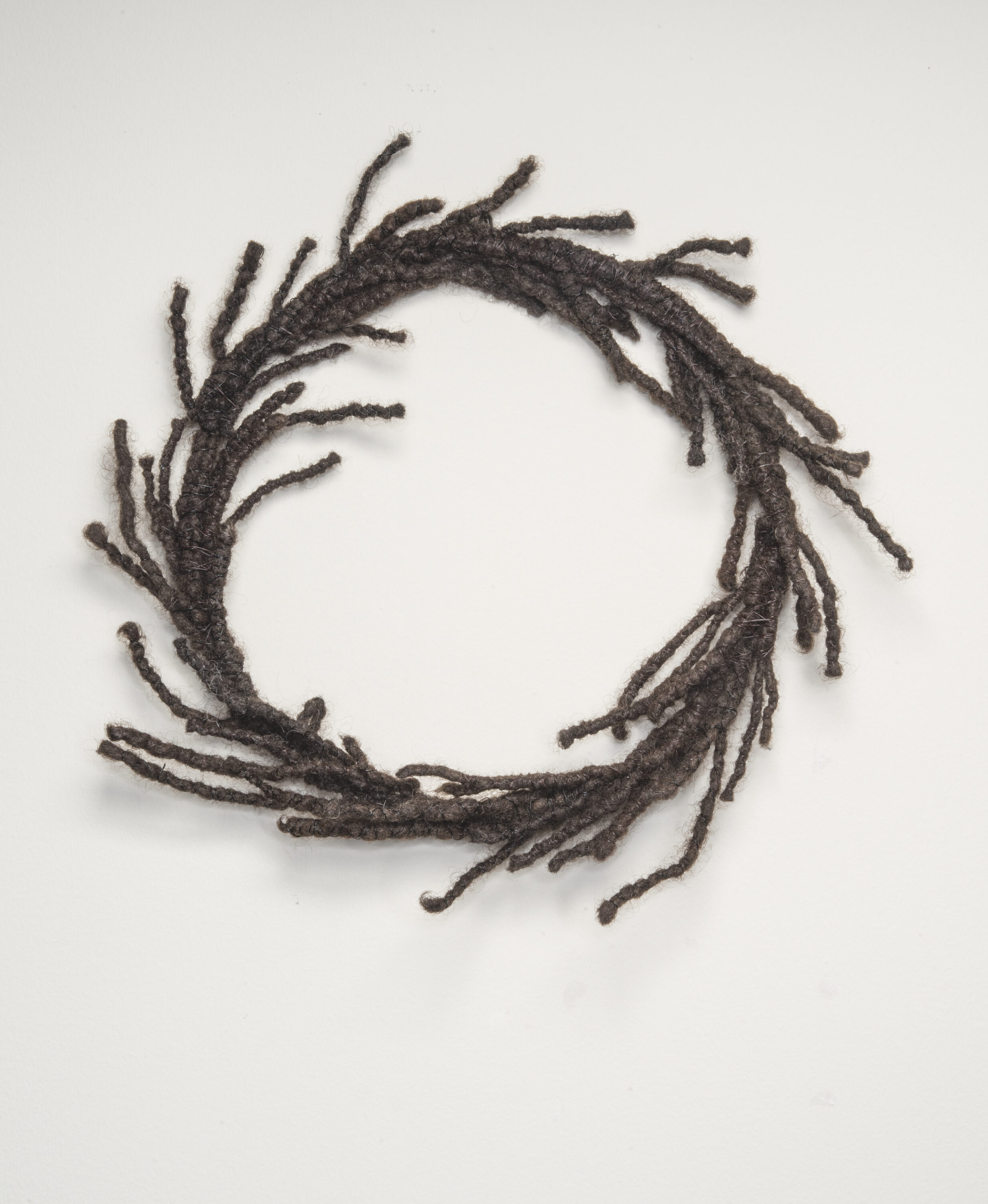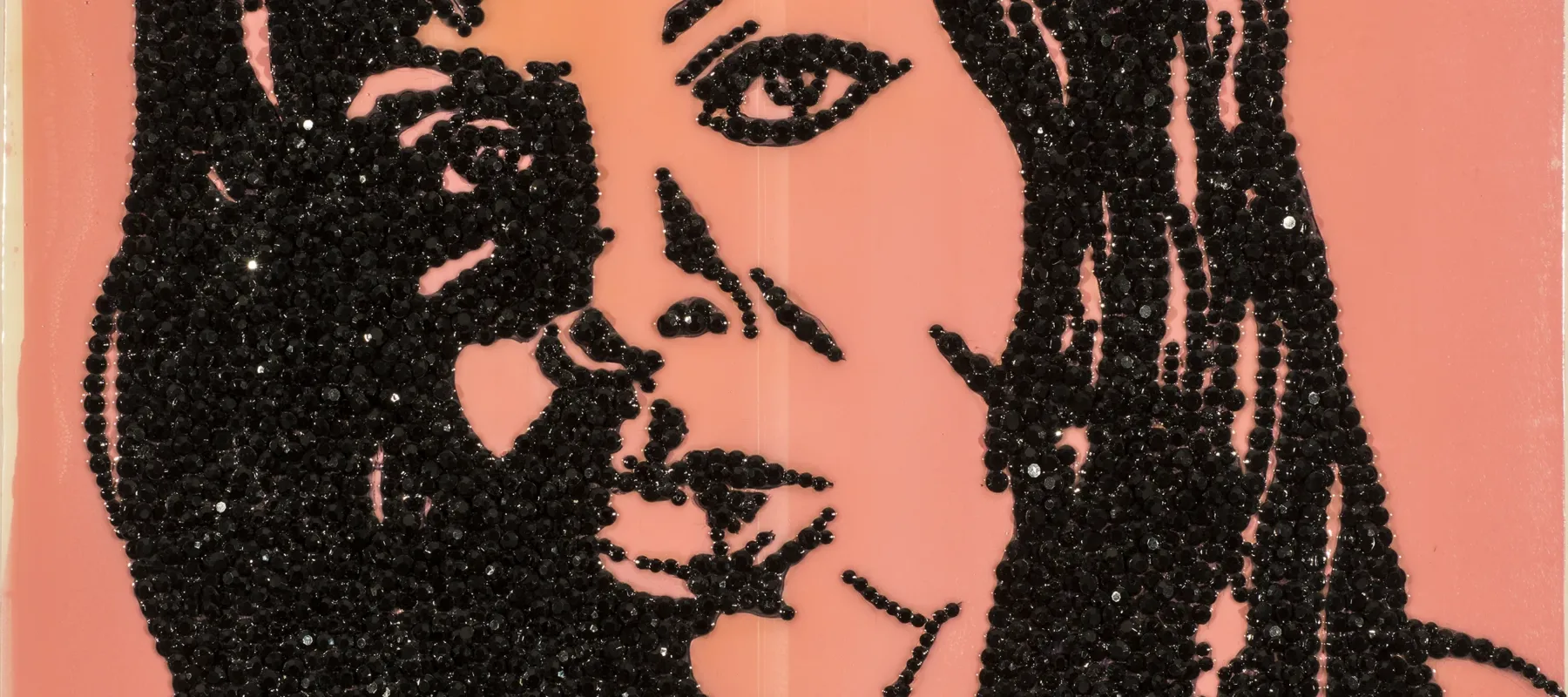April is National Poetry Month. To celebrate, we’re highlighting five contemporary poets inspired by artists whose works are in our collection.
1. Morgan Parker on Mickalene Thomas
Morgan Parker (b. 1987) commissioned a work by Mickalene Thomas (b. 1971) for the first-edition cover of her poetry collection There Are More Beautiful Things Than Beyoncé (2017). Inside, her poem “We Don’t Know When We Were Opened (Or, The Origin of the Universe)” is a tribute to Thomas’s bright celebration of Black womanhood. “I wanted my poem to reflect her work and add to it, translate it in my own words,” Parker said in an interview with the Seattle Art Museum.
“We low hum of satisfaction. We is is is is is is is is
touch, touch, shine, a little taste. You’re gonna
give us the love we need.”—Morgan Parker, from “We Don’t Know When We Were Opened (Or, The Origin of the Universe)”
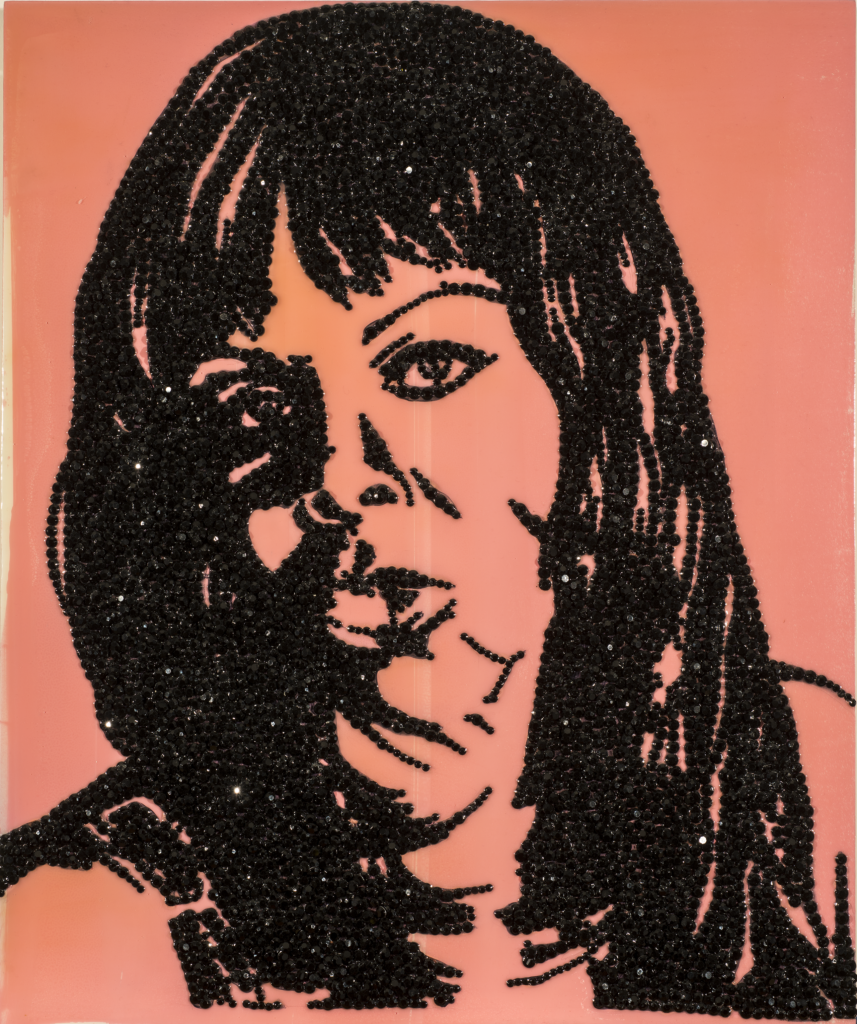
2. Victoria Chang on Agnes Martin
Victoria Chang (b. 1970) began her journey into ekphrastic poetry with the works of Edward Hopper and Eva Hesse, but it’s Agnes Martin (1912–2004) who lit a spark in the writer. Chang recently completed a book inspired by Martin and her works, and five of her poems on the artist were published by the Oxonian Review. “I started studying her paintings and reading everything I could about her. I wrote another poem, then another and another, and one day I looked up and I had written about 50 pages,” Chang said.
“Agnes incised her grids onto the wet blue wound. Each
rectangle is marked twice with two carats, as if to say the
grids aren’t enough, that beauty must be scored.”
—Victoria Chang, from “Untitled, 1960”
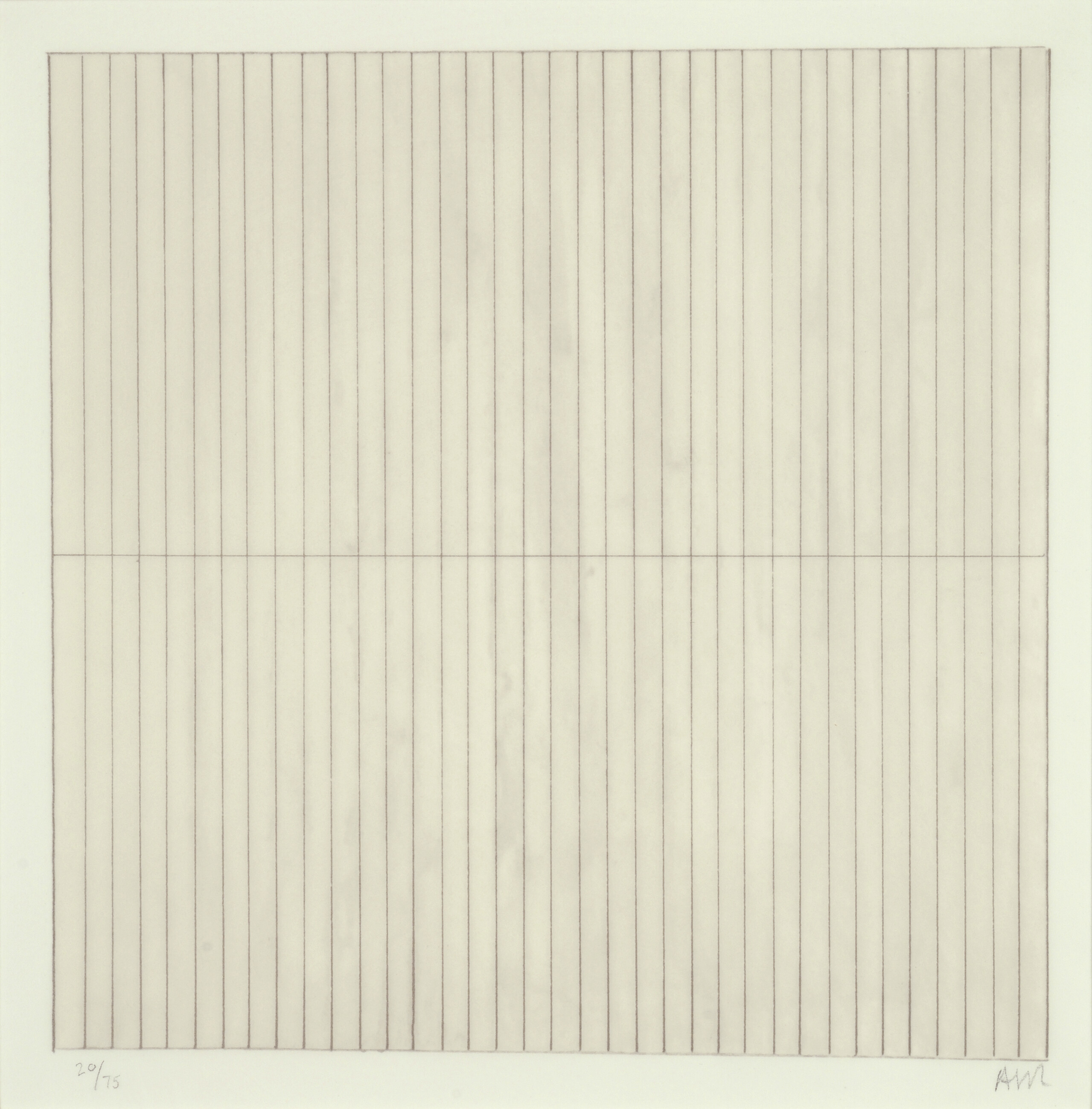
3. The Last Hoisan Poets on Hung Liu
In July 2022, poets Genny Lim, Flo Oy Wong, and Nellie Wong performed American Born / Resident Alien, a tribute to Hung Liu (1948–2021), at the de Young Museum, where the artist’s instillation Golden Gate (金門) was on view. They read works inspired by Liu’s paintings, such as Sisterhood (2018), and in honor of her life. “It is [the] quality of empathy…in each of her canvases, each stroke of her brush and each subject, whether animal, object, or human, which makes her work transcendent,” wrote Lim.
“Sisterhood is in the heart—Dei Moy
the pulse of morning, landscape of our dreams
We plow and we scrap, we seed and create”
—The Last Hoisan Poets, from “Dei Moy: Sisterhood is in the Heart”
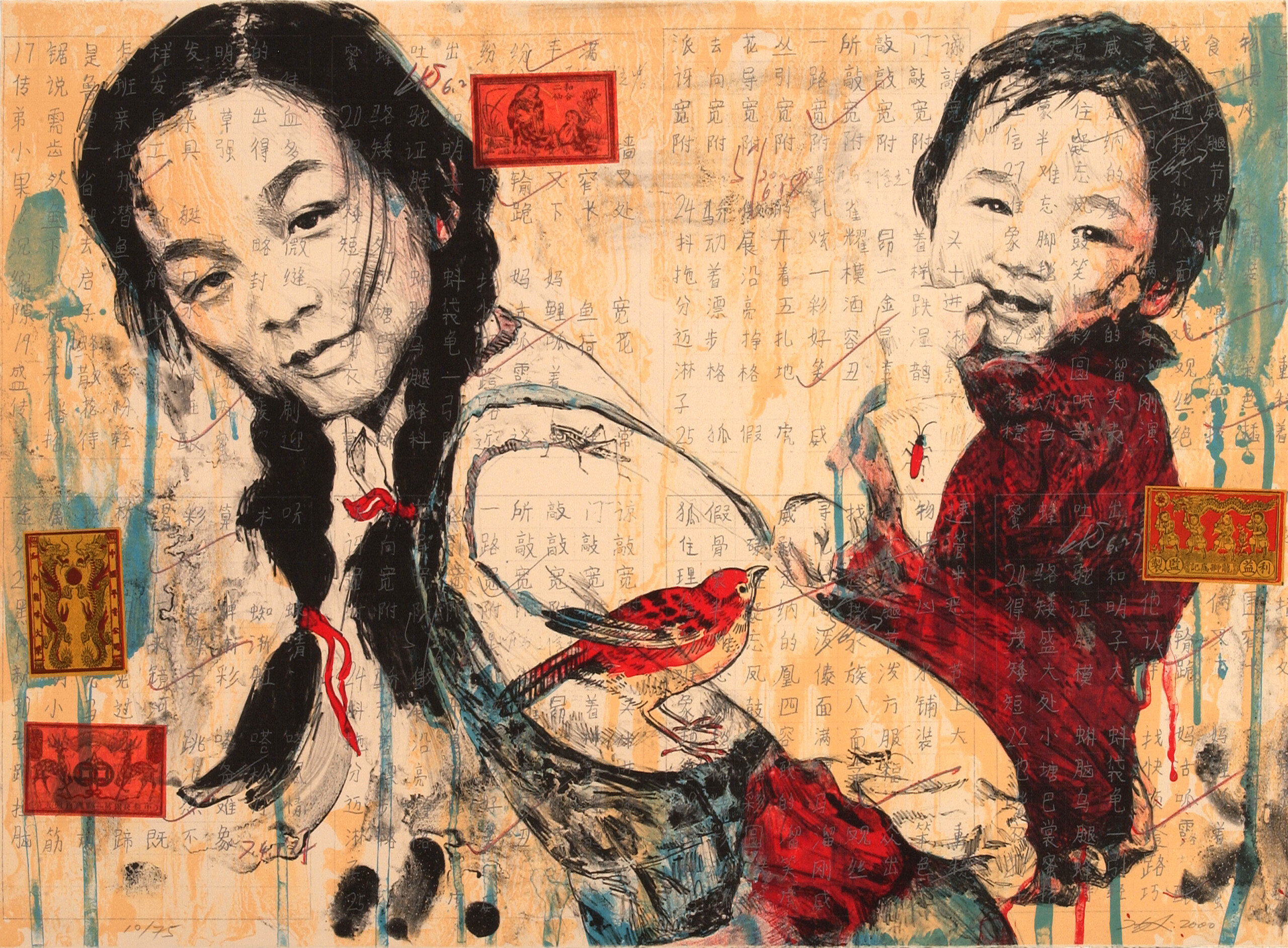
4. Ada Limón on Leonora Carrington
For the Museum of Modern Art’s Poetry Project, Ada Limón (b. 1976) penned “Not at All What We Expected” after And Then We Saw the Daughter of the Minotaur (1953) by Leonora Carrington (1917–2011). “I thought there was something almost revolutionary about [the painting],” Limón explained. “Distinctly feminist and strong. [It] seemed to be changing the myth of the Minotaur entirely and showing us something we’d never seen before, a feminine side.” Read more from the Museum of Modern Art’s Poetry Project: Aracelis Girmay on Ana Mendieta, Brenda Shaughnessy on Meret Oppenheim, Crystal Williams on Faith Ringgold, and Robin Coste Lewis on Barbara Chase-Riboud.
“What did we learn
of fear but at the center of the story
there is something almost feminine
and untamed making even
an endless cage glow?”—Ada Limón, from “Not at All What We Expected”
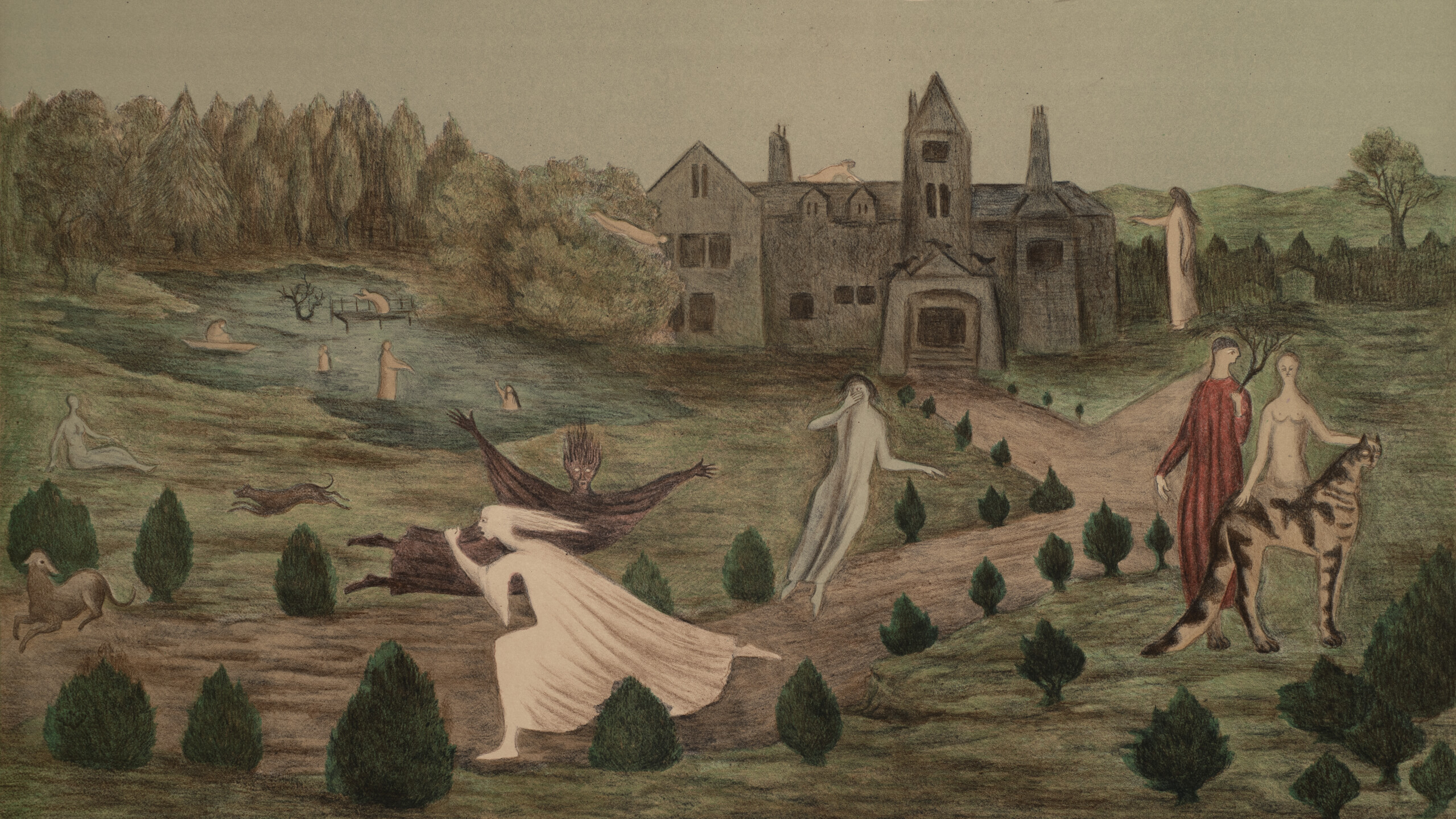
5. Nikky Finney on Sonya Clark
In 2019, NMWA commissioned poet Nikky Finney (b. 1957) to respond to the work of Sonya Clark (b. 1967), on the occasion of Clark’s exhibition Tatter, Bristle, and Mend. The poem, “Muniment of Hair,” was published in the exhibition catalogue and is a lyrical celebration of Clark’s creative inspirations. The word “muniment”—whose sound evokes “monument” and refers to a deed of ownership—references Clark’s art as a monument to be embraced.
“She works for hair uncorrupted, unraveling
tall ladders of hieroglyphic locks. Tightropes and twists, Afro-Scape of the strip-weave. The stilt walker of hair
is a contortionist.”—Nikky Finney, from “Muniment of Hair”
